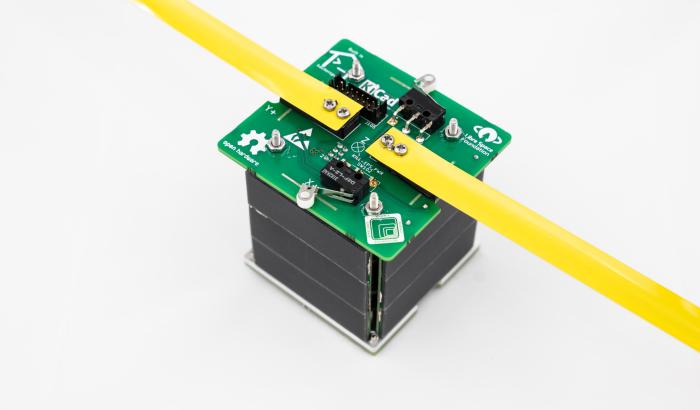
© LIST
Bianca Rita’s research focusses on a deposition technique of conjugated polymers and in particular on the poly (3,4-ethylenedioxythiophene) (PEDOT).
It is one of the most prestigious awards in the worldwide advanced materials community that the young LIST researcher receives today.
In recognition of her outstanding research on the deposition of a conducting polymer called PEDOT, Bianca Rita Pistillo, a researcher at the Luxembourg Institute of Science and Technology (LIST) today received the renowned Scientist Medal 2017 of the International Association of Advanced Materials (IAAM) at the European Advanced Materials Congress 2017 in Stockholm. IAAM is the main international network and interest group for researchers in advanced materials.
What is Bianca Rita’s research about?
Bianca Rita’s research focusses on a deposition technique of conjugated polymers and in particular on the poly (3,4-ethylenedioxythiophene) (PEDOT). Conjugated polymers are organic macromolecules that can have interesting and useful optical and electronic properties.
In the recent decade, PEDOT received increasing attention from the scientific community owing to its properties. As a matter of fact, it is almost transparent, has a low oxidation potential and good stability in the oxidized state, which makes PEDOT particularly useful for organic electronic devices such as Organic-LED (OLED). Other emerging PEDOT applications are energy conversion and storage devices, fuel cells, supercapacitors, thermoelectric or electrochromic devices.
Thanks to its unique properties, PEDOT deposited via PRAP-CVD could be easily applied to products in several markets including medical, sports, military and energy. Product examples include metal mesh, aerospace textile, stun gun vests, solar cells, smart glass etc.
What was Bianca-Rita’s contribution to the field?
Together with Mr Kevin Menguelti, the engineer with whom Bianca-Rita shared this challenging research line since the beginning, Bianca-Rita has demonstrated that the LIST proprietary technique named “Plasma radicals assisted polymerization” via chemical vapour deposition (PRAP-CVD) is an efficient alternative to conventional vapour based techniques to deposit conjugated polymers (CVDs).
Differently from the conventional CVDs, one of the main advantages is that this deposition process is completely dry, opening the possibility of processing solvent-sensitive substrates such as paper. This overcomes the effects of rinsing on the underlying films in the case of multilayer structures such as OLED.
Bianca-Rita’s team also demonstrated a unique ability of PRAP-CVD in depositing high conformal films on complex 3D substrates. This will allow to expand the application of PEDOT to highly structured surfaces such as fibres and fabrics.
PRAP-CVD is believed to be one of the cornerstones to enhance PEDOT or any conjugated polymer properties enabling higher device performances. As a relevant example, a new project employing PRAP-CVD for the next fuel cell generation is currently being developed.
Overall objective: develop a new class of visible-light nanocomposite photocatalysts
This research has been conducted at LIST’s Materials Research and Technology department within the Visible Light Nanocomposite Photocatalysts (VISICAT) project, funded in part by the Luxembourg National Research Fund (FNR) through its INTER and AFR PDR funding schemes.
The overall aim of VISICAT, managed by Dr. Damien Lenoble, was to develop a new class of visible-light nanocomposite photocatalysts. The photocatalytic approach was proposed several decades ago as an eco-friendly solution to remediate to the water and air pollution by the photo-induced degradation of pollutants in the aqueous or gas phases. Photocatalysts are solids, typically semiconductors, that promote reactions in the presence of light and are not themselves consumed. An ideal photocatalyst should be photoactive in the visible and/or near UV region, biologically and chemically inert, photostable, inexpensive and non-toxic. In that context, the former objective of the project was to develop a new class of polymer (PEDOT) matrix nanocomposite photocatalysts that are active at visible wavelengths.
Author: LIST, Bianca Rita Pistillo, Damien Lenoble
Editor: Michèle Weber (FNR)
Photo: LIST







